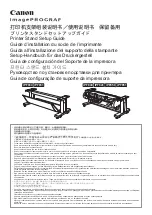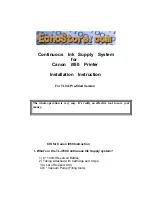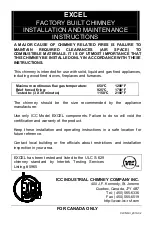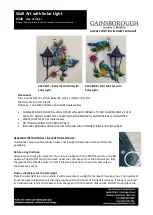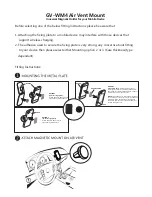
!
!
NVT INSTRUCTIONS
UNSHIELDED TWISTED PAIR
VIDEO WIRING
NOTE:
The customer must purchase the Video Transceiver from
NVT. Part numbers are:
• NV-212A (500 ft.)
* NV-213A or NV-213A-M (1000 ft.)
• NV-652R, NV-862R, or NV-1662R (3000 ft.)
The cameras included in the Q-View™ series have the option of transmitting video
signals to NVT receivers via unshielded twisted pair cable. You must purchase the
receiver separately. Instructions for connecting the receiver end of the the unshielded
twisted pair cable will be included with the NVT receiver. Following are instructions
for connecting the unshielded twisted pair cables to the RJ45 (Cat. 5) cable running
outside your housing.
1. Video for all four cameras is contained in the one RJ45 (Cat. 5) cable. An RJ45
female coupling is provided so that all connections can be made with an RJ45
connector. The following is the wiring diagram for the four twisted pair wires that are
included with the Cat. 5 cable.
PIN WIRE COLOR CAMERA NUMBER
1 White/Green Camera 1 +
2 Green Camera 1 -
3 White/Orange Camera 2 +
6 Orange Camera 2 -
5 White/Blue Camera 3 +
4 Blue Camera 3 -
7 White/Brown Camera 4 +
8 Brown Camera 4 -
2. Connect the other end of the unshielded twisted pair cable to the
NVT receiver.
CAUTION:
The unshielded twisted pair video signal is polarity dependent. The positive
video wire for each camera MUST be connected to the positive terminal on the NVT
receiver, and negative MUST be connected to negative.
3. When using unshielded twisted pair cable you DO NOT need the BNC connector. All
four BNC connectors are provided inside the housing for testing purposes. Be sure that
there is no video connection other than the unshielded twisted pair cable.
Wiring Notes
Wire — What to
DO
1.
DO
use point-to-point Unshielded Twisted Pair wire, gauge 24 or thicker, stranded
or solid, Category 2, 3, 4, or 5.
2. The video signal may co-exist in the same wire bundle as other video, telephone,
data, control signals, or low-voltage power. It is also OK to run NVT video signals in
or near electromagnetic fields (in accordance with National Electrical Code, local, or
other local safety requirements).
3.
DO
measure the wire distance. Use only transceivers that are designed for that
distance.
4.
DO
make sure the pair of wires carrying the video signal is sent as a twisted pair
(e.g. the blue-white/white-blue wires twisted together as a pair), not a “split-pair”
(e.g. blue-white conductor, part of one pair/orange-white conductor, part of another
pair).
Wire — What NOT to DO
1.
DO NOT USE SHIELDED TWISTED PAIR WIRE.
It will severely degrade the
distance performance. Short runs may be used with some signal degradation (for
example elevator traveler cables). Multi-pair wire with an overall shield is OK.
2.
DO NOT USE UN-TWISTED WIRE.
It will reduce the NVT product’s inherent
interference immunity.
3.
DO NOT
allow your installation to have “bridge-taps”, loading coils, talk-battery,
or MOV type protectors. Bridge-taps are where a twisted pair is connected to two
twisted pairs (such as an extension phone at home). Bridge-taps cause reflections
as the signal propagates, resulting in “ghosts” in the video image, and are to be
avoided.
4. If the phone company is providing the cable runs between buildings, make sure
it’s “dry copper” i.e. it should have none of the following: dial-tone, 48 volts, loading
coils, bridge-taps, switching, or long paths to the phone company’s central office and
back.
5.
Due to near-end crosstalk,
DO NOT
send a transmit and a receive signal in the
same wire bundle. Exceptions: Less than 1,000 ft (300m), or Category 5 cable, up to
2,000 ft (600m) are OK
.
6.
DO NOT
send “Up-the-Coax” Pan/Tilt/Zoom signals through active (amplified)
NVT transceivers.
Measure your wire distance
Note:
All NVT quoted distance specifications include any coax in the run. It is
recommended that the wire distance be measured to ensure that the capability of
the NVT product is correct.
Wire resistance may be measured with an ohm-meter by shorting the two
conductors together at the far end, and measuring the loop-resistance out and back.
Compare your readings with the charts on the next page.
7. For safety, never put NVT signals in the same conduit as high-voltage
wiring.
8.
WARNING
— to reduce a risk of fire or electrical shock, do not expose
this product to rain or moisture.
COMPLETION OF INSTALLATION
When the desired focus is achieved for each camera, adjust the segmented bracket
arms to the desired viewing angle. Once you've finished, put the dome back in place
and check to be sure none of the cameras touch the dome. If one or more do, readjust
the arm(s) until they are clear of the dome.
Содержание QOD SERIES
Страница 8: ...3 ...













